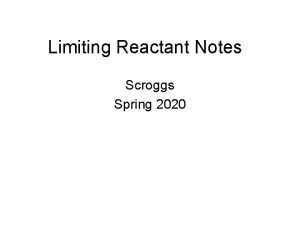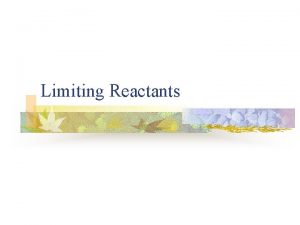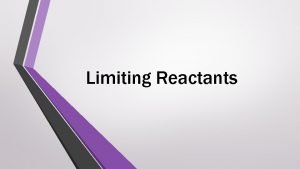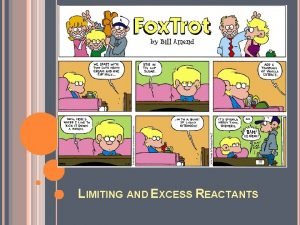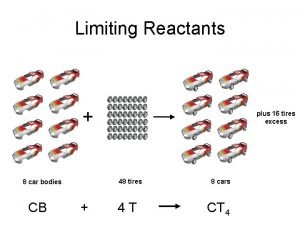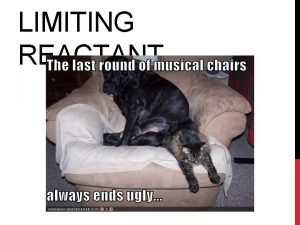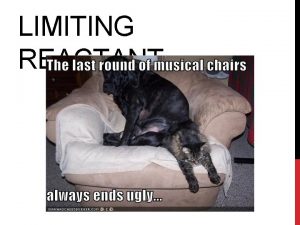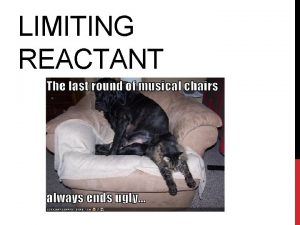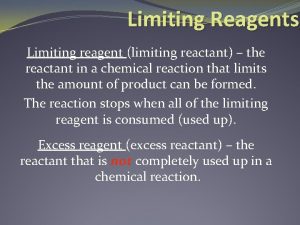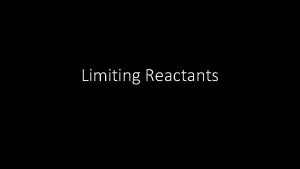LR XS REACTANTS LIMITING REACTANT COOKIES 1 cup






- Slides: 6

LR XS REACTANTS

LIMITING REACTANT: COOKIES 1 cup butter 1/2 cup white sugar 1 cup packed brown sugar 1 teaspoon vanilla extract 2 eggs 2 1/2 cups all-purpose flour 1 teaspoon baking soda 1 teaspoon salt 2 cups semisweet chocolate chips Makes 3 dozen If we had the specified amount of all ingredients listed, could we make 4 dozen cookies? What if we had 6 eggs and twice as much of everything else, could we make 9 dozen cookies? What if we only had one egg, could we make 3 dozen cookies?

LIMITING REACTANT • The reactant that limits how much product we get. Once it runs out, the reaction s. This is called the limiting reactant • Most of the time in chemistry we have more of one reactant than we need to completely use up other reactant. • That reactant is said to be in excess (there is too much).

LIMITING REACTANT AND YIELDS • To find the correct answer, we have to try all of the reactants. We have to calculate how much of a product we can get from each of the reactants to determine which reactant is the limiting one. • The reactant that makes the least amount of product is the limiting reactant Once you determine the limiting reactant, you should ALWAYS start with it! • The amount of product made by the limiting reactant is called theoretical yield. • Be sure to pick a product (there is a logical answer to which one you should pick)! You can’t compare to see which is greater and which is lower unless the product is the same!

LIMITING REACTANT: RECAP 1. You can recognize a limiting reactant problem because there is MORE THAN ONE GIVEN AMOUNT. 2. Convert ALL of the reactants to the SAME product. 3. The lowest product answer is the correct answer, called the THEORETICAL YIELD. 4. The reactant that gave you the lowest answer is the LIMITING REACTANT. 5. The other reactant(s) are in EXCESS. 6. If you have to find more than one product, be sure to start with the limiting reactant. You don’t have to determine which is the LR over and over again! 7. HONORS: To find the amount of excess, subtract the amount used from the given amount.

PERCENTAGES TO CALCULATE 1. Percent Yield This is comparing theoretical yield to an experimental (actual) yield. 2. Percent Error This is seeing how much experimental error was involved
